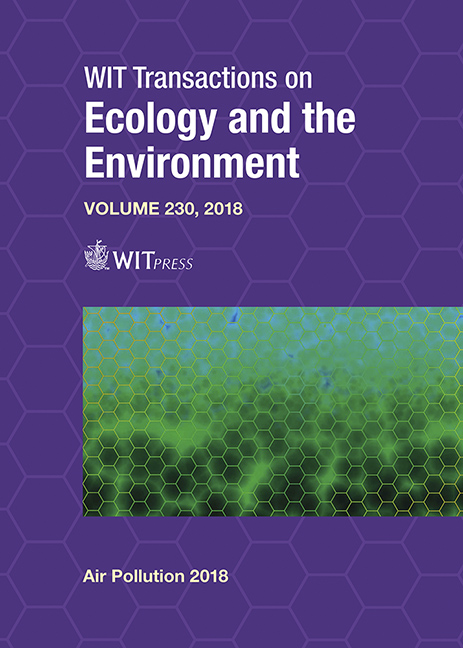NUMERICAL SIMULATION OF INDUSTRIAL DUST DISTRIBUTION IN THE TERRITORY OF ZESTAFONI, GEORGIA
Price
Free (open access)
Transaction
Volume
230
Pages
10
Page Range
119 - 128
Published
2018
Paper DOI
10.2495/AIR180111
Copyright
WIT Press
Author(s)
NATIA G. GIGAURI, LEILA V. GVERDTSITELI, ALEKSANDRE A. SURMAVA, LIANA N. INTSKIRVELI
Abstract
Dust distribution of the industrial town of Zestafoni located in the complex territory of Georgia in case of basic meteorological situations and stationary pollution sources is studied with the use of regional model of atmospheric process development in the Caucasus and non-stationary three-dimensional equation of transfer-diffusion of passive admixtures. Distribution patterns of dust dissipated in the atmosphere are obtained at different levels from the surface. It is shown that dust dissipated from cities in the atmosphere is basically concentrated in the boundary layer. Maximum values of dust concentration are obtained in the lower 100 m of surface air layer. Spatial dust distribution region increases and concentration decreases along with height increase. An influence of local orography on the pollution cloud is investigated. During a background western light air Likhi and Racha ridges impede dust transfer to the east and cause dust cloud deformation. Dust spreads along the valleys of Kvirila and Chkherimela rivers located between the ridges. In the case of gentle and fresh breezes the impact of local orography on the dust dispersion process is insignificant. Dust is basically transferred in the direction of background flows. The zone of influence of industrial town dust on the environmental pollution is determined. A width of this area varies from 5 to 20 km in dependence of the background wind velocity. Kinematics of dust propagation is studied. It is determined that in 2–100 m layer of atmosphere the process of turbulent diffusion takes precedence in the process of dust spreading. From 100 m to 1 km the processes of diffusive and advective transfers are identical, while above 1 km the preference is given to advective transfer.
Keywords
atmospheric air pollution, Zestafoni dust distribution, numerical simulation





